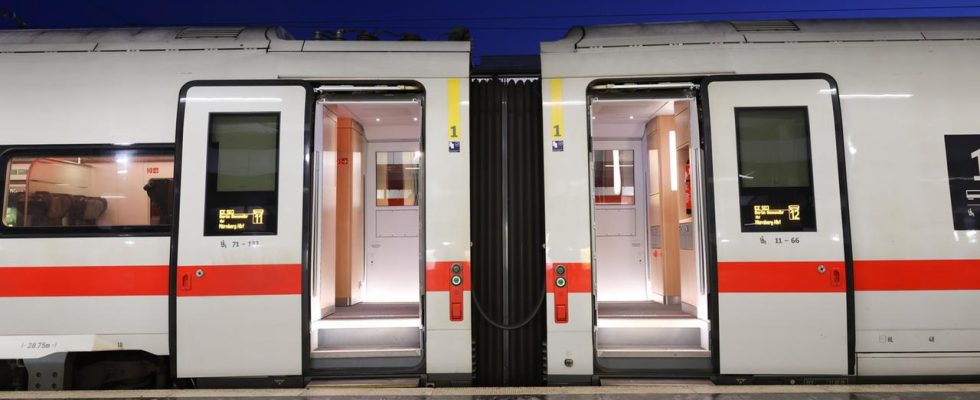ICE connections every half hour – that is one of the promises of the Deutschlandtakt. This should be a reality in 20 cities by 2026. One problem with this: the network is already overloaded in many places.
The railways are currently experiencing more problems than ever: they are a long way from their own, not very high, punctuality targets, new strikes are threatening them due to the current wage dispute – and in a way they are being overwhelmed by their own success. Because after the end of the corona pandemic, people are traveling by train again in droves – and there they often find an overloaded infrastructure.
The Deutschlandtakt should bring significant improvements, with long-distance trains running every hour in each direction at the same minute – on main axes even every 30 minutes. The official target date for this is 2030.
Lutz: “The Germany clock is not dead, he is alive”
According to Bahn, improvements should be made much earlier. By 2026, 20 major German cities should be connected to nationwide long-distance transport with ICE/IC trains running every half hour, Deutsche Bahn boss Richard Lutz announced to journalists on Thursday. That would be “almost twice as many cities in just three years as there are today”.
According to Deutsche Bahn, this half-hourly service is already available at the train stations in Berlin, Duisburg, Düsseldorf, Frankfurt am Main (airport and main train station), Hagen, Hamburg, Cologne, Munich, Nuremberg, Wuppertal and Würzburg. By 2026, Augsburg, Erfurt, Göttingen, Halle an der Saale, Hanover, Kassel, Mannheim, Stuttgart and Ulm are to be connected to long-distance traffic.
The railway is “in the middle of building the Germany cycle,” said Lutz. “The Germany clock is not dead, it is alive and will be implemented.” He also announced that he would accelerate the purchase of new trains. To this end, intensive talks are being held with the industry. “This will be one of the largest procurement packages in DB history.”
The bottleneck is already 140 percent occupied today
However, one of the biggest problems of the railways is that the network is already overloaded in many places and each additional train exacerbates this problem. And that this cannot be changed overnight.
An example of such a bottleneck is Hamburg, where the so-called connecting railway, which connects to the north of the main station, is currently “140 percent full” according to railway information – that is, completely overloaded. And there is no more space in Hamburg’s main train station – neither for more trains nor for more passengers.
A large-scale remedy could only be provided by another S-Bahn tunnel, which has not really progressed beyond the initial stage of consideration. A look at Munich gives you an idea of how long it might take for the tunnel through Hamburg to actually be completed: a second S-Bahn tunnel has been under construction there since 2017 through the city centre. Actually, it should be finished in 2028. There is now official talk of an opening in 2035 – at the earliest.
The nationwide Germany clock was originally targeted for 2030 – a date that may have been wishful thinking from the start. The Federal Government Commissioner for Rail Transport, State Secretary Michael Theurer, recently put it this way on ZDF: Deutschlandtakt will be implemented “in the next 50 years as a project of the century”.

